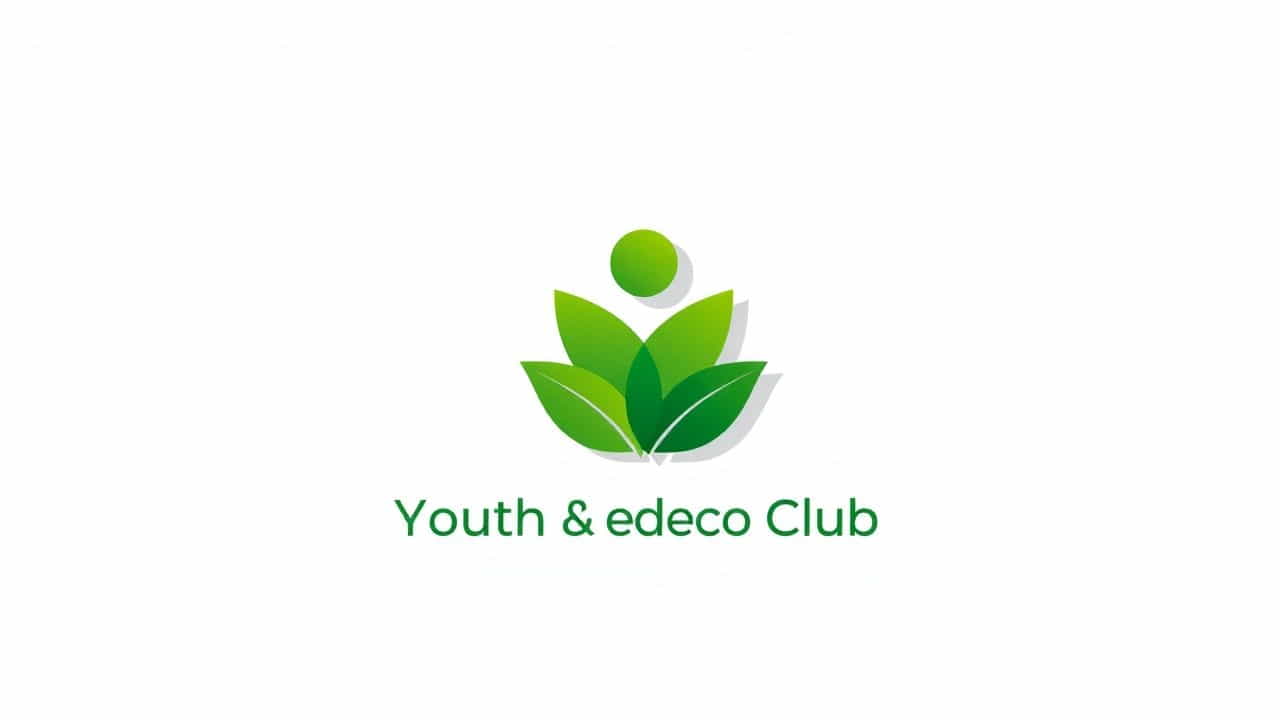A Youth and Eco Club logo represents an organization’s commitment to youth empowerment and environmental sustainability. A well-designed logo creates a strong visual identity, inspires engagement, and communicates the club’s values effectively.This topic explores the key elements of a Youth and Eco Club logo, including symbolism, color psychology, typography, and design trends. Whether you are creating a new logo or refreshing an existing one, this guide will help you make an impact.
Why a Good Logo Matters for a Youth and Eco Club
1. Creates a Strong First Impression
A logo is often the first thing people notice about an organization. A clear, modern, and meaningful design helps establish credibility and attracts new members.
2. Reflects the Club’s Mission
A Youth and Eco Club typically focuses on community involvement, sustainability, and youth leadership. A well-crafted logo visually represents these values.
3. Enhances Brand Recognition
A unique and memorable logo makes the club easily identifiable and strengthens its presence in the community.
4. Encourages Membership and Participation
An appealing logo helps create a sense of belonging, encouraging young people to join and actively participate in eco-friendly initiatives.
Key Elements of a Youth and Eco Club Logo
1. Symbolism and Icons
Using meaningful icons in the logo enhances visual storytelling. Some powerful symbols include:
-
Trees and Leaves – Representing nature, growth, and sustainability.
-
Hands or People Figures – Symbolizing youth involvement and teamwork.
-
Earth or Globe – Emphasizing global responsibility and environmental awareness.
-
Sun and Water – Highlighting renewable energy, conservation, and a brighter future.
2. Color Psychology in Logo Design
Colors play a significant role in conveying emotions and messages. Common colors used in Youth and Eco Club logos include:
-
Green – Represents nature, growth, and eco-friendliness.
-
Blue – Symbolizes trust, harmony, and water conservation.
-
Yellow – Reflects positivity, energy, and youthfulness.
-
Brown – Associated with the earth, stability, and sustainability.
3. Typography and Font Choices
The right font makes a logo look modern and professional. Popular typography choices include:
-
Sans-serif fonts – Clean and modern, often used for environmental organizations.
-
Handwritten or script fonts – Represent a personal and youthful touch.
-
Bold fonts – Create a strong visual impact and make the logo stand out.
Steps to Create an Effective Youth and Eco Club Logo
1. Define the Club’s Identity
Before designing a logo, consider the club’s mission, target audience, and key values. This will guide the design process and ensure the logo aligns with the organization’s purpose.
2. Sketch Initial Concepts
Start with rough sketches to explore different design ideas. Consider how symbols, typography, and colors can work together to create a visually appealing logo.
3. Choose the Right Design Software
Popular tools for designing logos include:
-
Adobe Illustrator – Professional vector design software.
-
Canva – User-friendly for beginners.
-
CorelDRAW – Great for scalable designs.
4. Keep the Design Simple and Versatile
A logo should be simple yet impactful. Avoid cluttered designs and ensure the logo is:
-
Scalable – Looks good on posters, websites, and social media.
-
Timeless – Avoids trendy elements that might become outdated.
-
Adaptable – Works in both color and black-and-white formats.
5. Get Feedback and Make Improvements
Once the initial design is ready, gather feedback from club members, mentors, and graphic designers. Refining the logo based on input ensures it effectively represents the club.
Popular Logo Styles for Youth and Eco Clubs
1. Minimalist Logos
Simple, clean designs with bold typography and minimal icons. These logos are modern and easy to recognize.
2. Badge-Style Logos
A circular or shield-shaped design that contains symbols, text, and colors to create a unified look.
3. Abstract Logos
Geometric or artistic representations of nature and youth engagement. These logos allow for creative interpretations.
4. Combination Logos
A mix of icons and typography, where text is integrated with nature-inspired symbols.
Examples of Effective Youth and Eco Club Logos
1. A Tree with Growing Hands
A tree with human-like hands as branches symbolizes youth development and environmental responsibility.
2. A Globe with Leaf Patterns
Represents global awareness and sustainability efforts while maintaining a professional look.
3. Typography-Based Logo with a Leaf Accent
Using bold text with a small leaf or tree icon makes the design look modern yet simple.
Common Mistakes to Avoid in Logo Design
1. Using Too Many Elements
Overcrowding a logo with excessive symbols can make it look cluttered and unprofessional.
2. Choosing Hard-to-Read Fonts
Avoid decorative fonts that are difficult to read, especially when displayed in small sizes.
3. Ignoring Scalability
A good logo should look clear on banners, T-shirts, and social media icons without losing quality.
How to Use the Logo Effectively
1. Branding on Merchandise
Print the logo on T-shirts, bags, and posters to increase visibility and promote the club’s mission.
2. Digital Presence
Use the logo on social media, websites, and event flyers to establish a strong online identity.
3. Event Signage and Banners
Displaying the logo at community events, fundraisers, and environmental campaigns enhances public recognition.
A well-designed Youth and Eco Club logo is essential for branding, engagement, and community impact. By carefully selecting symbols, colors, and typography, the logo can effectively represent the club’s mission and inspire participation. A strong logo helps create a lasting impression, encouraging youth to contribute to environmental and social causes.
